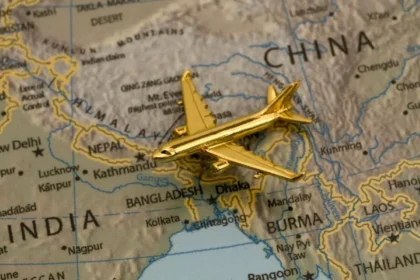Indian hockey has always been more than just a sport; it is a thread woven deep into the cultural and historical fabric of the nation. From the golden days of Olympic dominance to the challenging periods of rebuilding, hockey has reflected both the resilience and the aspirations of India. The Men’s Asia Cup 2025 in Muscat, Oman, was yet another significant chapter in this ongoing story. For the Indian men’s hockey team, the tournament was not only a chance to fight for regional supremacy but also an opportunity to assess where they stand on the path toward bigger global ambitions, including the upcoming World Cup and the Olympics.
The Asia Cup has historically been a stage where India has excelled. With multiple titles in its name, India entered the 2025 edition carrying the weight of expectations from millions of fans. Hockey in India may no longer command the singular attention it once did in the days before cricket’s rise, but each Asia Cup has remained a source of pride and a testing ground for the team. The 2025 edition proved no different. India’s campaign was a mix of determination, moments of brilliance, and hard lessons that highlighted both strengths and weaknesses in the squad.
The Journey Through the Tournament

India began its Asia Cup 2025 campaign in Group B alongside Japan, Bangladesh, and Malaysia. The group stage games were critical not just for qualification but also to build rhythm and confidence. Against Bangladesh, India dominated, showcasing its superior skills and fitness levels. The attacking unit, led by experienced forwards, displayed sharpness in the circle, and the midfield controlled possession with authority. This match set the tone, but it was against stronger opponents like Japan and Malaysia that India’s real tests began.
Japan, known for its tactical discipline and speed, gave India a tough fight. The contest revealed gaps in India’s defensive organization, especially when handling counterattacks. However, the Indian team’s resilience shone through as they clawed back from behind to secure a draw. It was a reminder that while India had attacking depth, the defense still required more consistency under pressure. Against Malaysia, the stakes were higher. Malaysia has always been a tricky opponent in Asian hockey, often capable of pulling surprises. In this game, India showed composure, winning narrowly, but questions were raised about their conversion rate of penalty corners—traditionally India’s strong weapon.
Reaching the semi-finals, India faced South Korea, the defending champions and one of the toughest sides in Asia. It was a tense battle of tactics and endurance. The Koreans pressed high and forced errors, but India’s midfielders stood strong, creating opportunities through quick passes and maintaining a high tempo. The match ended in India’s favor, though narrowly, propelling them into the much-anticipated final against arch-rivals Pakistan.
The India–Pakistan Clash: High Stakes, High Emotions

Few rivalries in world sport match the intensity of India vs Pakistan in hockey. The 2025 Asia Cup final was no exception. Fans from both nations filled the stands, and the atmosphere was electric. The game itself was a thriller, with both sides trading attacks and testing each other’s defenses. India started aggressively, scoring early through a well-executed field goal. However, Pakistan responded strongly, leveling the score before halftime.
In the second half, the game turned into a test of nerves. India earned multiple penalty corners, but their conversion rate let them down. Pakistan, on the other hand, capitalized on a defensive lapse to take the lead. With only minutes left, India mounted relentless pressure, equalizing through a stunning reverse hit. The final whistle blew with the scores tied, and the match went into a penalty shootout.
Unfortunately for India, the shootout did not go their way. Pakistan emerged victorious, reclaiming the Asia Cup title, while India settled for silver. For the Indian team, it was a bitter pill to swallow, especially after coming so close. Yet, the final also demonstrated the team’s fighting spirit and ability to handle pressure on the biggest stage.
Key Takeaways and Lessons
While India did not lift the trophy, the Asia Cup 2025 offered valuable lessons.

-
Penalty Corner Conversions
India’s greatest strength has often been its penalty corner specialists. Legends like Rupinder Pal Singh and Harmanpreet Singh built reputations on drag-flicks. However, in this tournament, the conversion rate was below expectations. Modern defenses have adapted to India’s penalty corner strategies, and it is clear that innovation in set plays and drag-flick techniques is urgently needed. -
Defensive Organization
Against fast-paced teams like Japan and Korea, India’s defensive line looked vulnerable. While individual defenders displayed skill, coordination as a unit faltered at times. The need for a strong defensive system and consistency in marking and clearing is a critical takeaway. -
Emerging Young Talent
On the positive side, India’s youngsters were among the standout performers. Several debutants impressed with their speed, energy, and creativity. This injection of fresh talent is encouraging for the long-term future of Indian hockey, but it also highlights the need to balance youth with experience. -
Mental Toughness
The penalty shootout loss against Pakistan revealed gaps in mental conditioning. High-pressure moments demand composure, and while the Indian players were courageous, they lacked the calm execution seen in their rivals. Sports psychologists and mental toughness training must become central to India’s preparation. -
Fitness and Endurance
India’s high-tempo style requires peak physical conditioning. Though fitness levels have improved drastically in recent years, certain lapses in the latter stages of matches showed there is still room for improvement in endurance and recovery strategies.
The Broader Context: Indian Hockey’s Trajectory

The Asia Cup 2025 was not just about a single tournament. It was also about where Indian hockey stands in its long-term journey. The bronze medal at the Tokyo Olympics 2021 reignited national interest in hockey, and consistent performances in FIH Pro League have maintained momentum. However, the Asia Cup exposed areas that need sharpening before India can truly challenge for global dominance again.
India’s traditional flair and attacking instincts remain strong. The team is capable of producing magical moments that remind fans of the golden era. Yet, in modern hockey, structure, discipline, and adaptability are equally important. European teams like Belgium, Netherlands, and Germany have perfected this balance, and India must follow suit. The Asia Cup loss to Pakistan should be seen not as a failure but as a wake-up call to raise standards further.
Preparing for the Future

-
Investing in Coaching and Analysis
Modern hockey is as much about data as it is about skill. Advanced video analysis, data-driven strategies, and opponent-specific preparation must become a norm for India. The team requires not just skilled coaches but also sports scientists and analysts who can bring precision to their strategies. -
Grassroots Development
To sustain success, India must expand its grassroots hockey programs. The Asia Cup showcased the talent pipeline, but more systematic scouting, training academies, and support structures are needed, particularly in rural areas where hockey remains popular. -
Women’s Hockey Parallel Growth
The success of Indian women’s hockey has also inspired millions. Investing equally in both men’s and women’s teams will strengthen the hockey ecosystem as a whole. Events like the Asia Cup remind us that a holistic approach is necessary. -
Exposure to International Leagues
Indian players must gain more exposure by playing in competitive leagues abroad. This helps them adapt to varied playing styles and prepares them for the unpredictability of global tournaments. -
Mental Conditioning Programs
To overcome shootout nerves and high-pressure challenges, structured mental conditioning programs should be integrated into the team’s routine. Confidence, composure, and decision-making under stress are just as important as physical skills.
Looking Ahead
The Men’s Asia Cup 2025 was a mixed campaign for Indian hockey. While the silver medal is commendable, the manner of the loss in the final left fans yearning for more. Yet, tournaments like these are not just about silverware; they are about progress, learning, and preparing for greater challenges ahead.
The road to the 2026 Hockey World Cup and the 2028 Los Angeles Olympics lies ahead, and India must build on the foundations laid at the Asia Cup. With the right blend of youth and experience, investment in infrastructure, and a commitment to evolving with modern hockey’s demands, India has the potential to return to the top of world hockey.
For fans, the Asia Cup 2025 was a reminder of the magic of the sport—the thrill of attacking moves, the heartbreak of missed chances, and the eternal hope that the next tournament will bring glory. For the players, it was a lesson in resilience and a call to aim higher.
In the end, Indian hockey at the Asia Cup 2025 may not have delivered the ultimate prize, but it delivered something equally important: clarity about where we are, what needs fixing, and how bright the future can be if lessons are embraced with courage and conviction.









